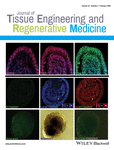Development of a protocol for maintaining viability while shipping organoid-derived retinal tissue
Abstract
Retinal organoid technology enables generation of an inexhaustible supply of three-dimensional retinal tissue from human pluripotent stem cells (hPSCs) for regenerative medicine applications. The high similarity of organoid-derived retinal tissue and transplantable human fetal retina provides an opportunity for evaluating and modeling retinal tissue replacement strategies in relevant animal models in the effort to develop a functional retinal patch to restore vision in patients with profound blindness caused by retinal degeneration. Because of the complexity of this very promising approach requiring specialized stem cell and grafting techniques, the tasks of retinal tissue derivation and transplantation are frequently split between geographically distant teams. Delivery of delicate and perishable neural tissue such as retina to the surgical sites requires a reliable shipping protocol and also controlled temperature conditions with damage-reporting mechanisms in place to prevent transplantation of tissue damaged in transit into expensive animal models. We have developed a robust overnight tissue shipping protocol providing reliable temperature control, live monitoring of the shipment conditions and physical location of the package, and damage reporting at the time of delivery. This allows for shipping of viable (transplantation-competent) hPSC-derived retinal tissue over large distances, thus enabling stem cell and surgical teams from different parts of the country to work together and maximize successful engraftment of organoid-derived retinal tissue. Although this protocol was developed for preclinical in vivo studies in animal models, it is potentially translatable for clinical transplantation in the future and will contribute to developing clinical protocols for restoring vision in patients with retinal degeneration.
CONFLICT OF INTEREST
The authors have declared that there is no conflict of interest.




